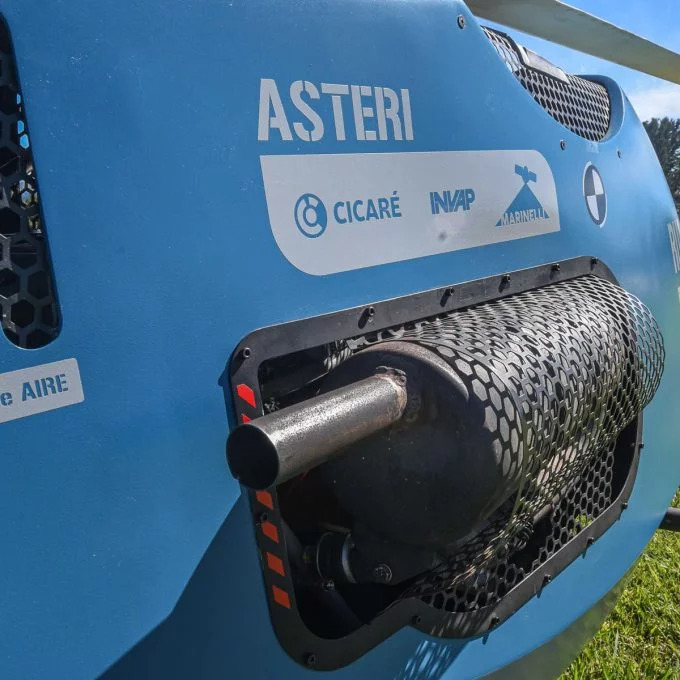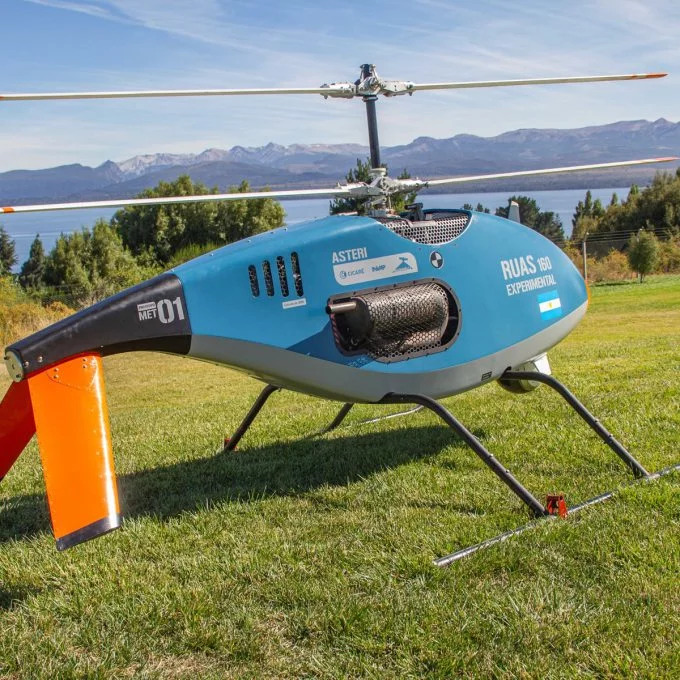
The Ministry of Defense, through Resolution 1727/2021, approved the purchase of a naval drone model RUAS-160 for 1,770,000 dollars to be used by the Argentine Navy in search and rescue, reconnaissance, surveillance and environmental monitoring tasks.
The device was jointly designed by three companies and is an unmanned rotary-winged helicopter, compact and with great autonomy. Cicaré, Argentine helicopter manufacturer; Invap, a state-owned Rionegrina high-tech company; and Marinelli Technology, an agricultural services company; have joined forces to design and produce the RUAS-160, a drone manufactured in Argentina that wants to position itself as a product with the ability to be used for both areas of defense and security, as well as for civil and agricultural tasks.
The RUAS-160 is 3.1 meters long and 1.72 meters high, its engine allows a maximum range of 600 kilometers -320 nautical miles-, it has a range of 5 hours, an operating ceiling of 3,000 meters high and a maximum speed of 85 knots, or 157 kilometers per hour.

“An agile change between its different configurations gives it adequate flexibility for rapid deployment and to meet the needs for search, rescue, border and sea surveillance, patrolling, support in situations of natural disasters, among other situations,” Marinelli Technology said.
For defense and security tasks - a configuration that was acquired by the Navy, as confirmed by Infobae with sources from Marinelli Tecnology, manufacturers offer the instrument apparatus with a gyrostabilized platform with EO/IR sensors, LIRDAR and an X-band SAR radar, tools that give the helicopter the ability to detect, recognize and even identify mobile and fixed objects both on land and at sea.
Before the device is delivered, tests will be carried out with the MET2 (Technology Assessment Model) owned by Invap, then tests will be carried out with the MET3, and finally the MET4 will be tested, which is the one intended to be delivered to the ARA in case the tests go well.

As for its civilian applications, the RUAS-160 can be used for firefighting, for transporting light or critical loads, such as the transfer of organs, for the inspection of large structures, for the taking of mineral samples, and, above all, for agricultural tasks, where it could be used for hyperselective spraying of crops and for image capture to monitor the health status of the land and plantations.
The advantage of RUAS is that it is a compact and lightweight device that can be easily transported, deployed on any terrain or from the deck of a ship, and operate in adverse weather conditions with reduced risk compared to other devices of this class.
The device has two options for its operational control. For minimal logistics operations, it has a robust portable earth station control system; and for more complex operations, it offers a complete system of control consoles capable of long-distance communication.
The equipment purchased by the Argentine Navy for USD 1,770,000 consists of a RUAS-160 configured for defense and security tasks and a portable control station composed of two stiffened cases, an FHD optical electric gimbal, an IR LWIR system, a rangefinder, a medium- and long-range communications system, and a satellite transmission system for medium/low definition online video.
KEEP READING
Últimas Noticias
Debanhi Escobar: they secured the motel where she was found lifeless in a cistern
Members of the Specialized Prosecutor's Office in Nuevo León secured the Nueva Castilla Motel as part of the investigations into the case

The oldest person in the world died at the age of 119
Kane Tanaka lived in Japan. She was born six months earlier than George Orwell, the same year that the Wright brothers first flew, and Marie Curie became the first woman to win a Nobel Prize

Macabre find in CDMX: they left a body bagged and tied in a taxi
The body was left in the back seats of the car. It was covered with black bags and tied with industrial tape
The eagles of America will face Manchester City in a duel of legends. Here are the details
The top Mexican football champion will play a match with Pep Guardiola's squad in the Lone Star Cup

Why is it good to bring dogs out to know the world when they are puppies
A so-called protection against the spread of diseases threatens the integral development of dogs




